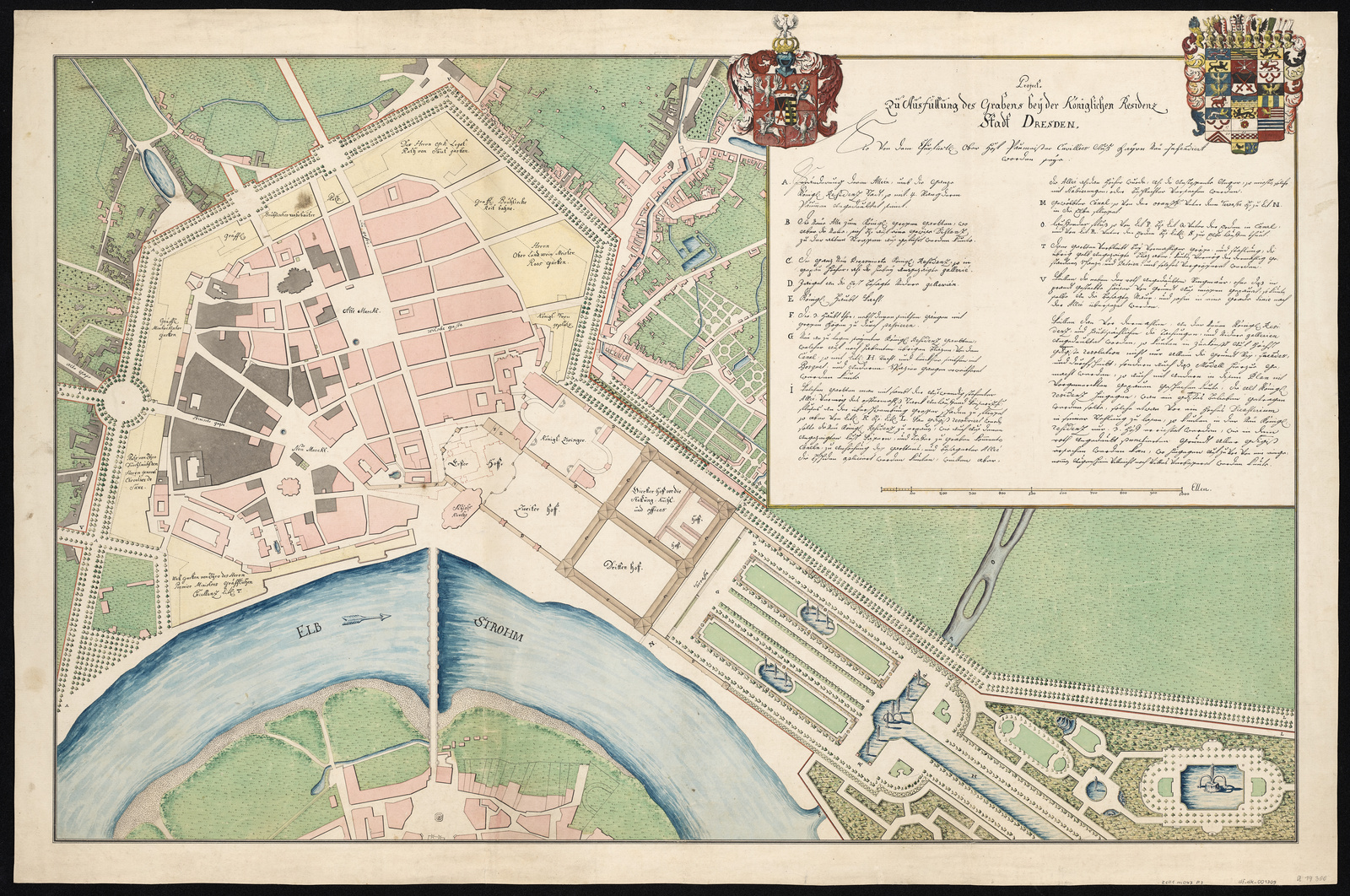François de Cuvilliés the Elder, Project for the demolition of the fortifications of Dresden, 1761, SLUB Dresden Deutsche Fotothek.
King Frederick II of Prussia’s bombardment of Dresden during the Seven Years’ War was the worst destruction the city suffered before the bombings of 1945. Following the destruction of its suburbs in November 1758 and August 1759, the walled city itself came under attack for the first time from 19th to 22nd July 1760. After this attack, the south-eastern part of the fortress – roughly one third of its buildings – lay completely in ruins.
To avoid further damage, King Augustus III ordered the rapid demolition of the fortress, despite strong resistance from the military: the walls were dismantled and the moat filled in. Initial plans, drawn up by the architect Julius Heinrich Schwarze (1706-1775) ran into
difficulties due to property rights, as the numerous private plots of land on the Counterscarp (the outer side of the fortress) prevented the creation of a symbolic promenade with squares opening out onto streets to create perspective.
It was probably the princely elector couple Friedrich Christian (1720-1763) and Maria Antonia (1724-1780) who, whilst taking refuge in Munich from January 1760 to January 1762, established contact with François de Cuvilliés (1695-1768), the Bavarian court architect.
The plan he designed was the most majestic in 18th century Dresden. Its main feature was the construction of a 45-metre-wide avenue across the fortress moat, intercepted by circular and square spaces marking the entrances to the walled city. Another important element of the project was the construction of a huge palace (residential castle) on the fortress grounds northwest of the Zwinger. Its elongated forecourt and grandiose garden facing towards the Ostragehege, would have created a vast complex, making the historic town appear as little more than an ancient appendage.
In the end, Cuvilliés’s project was quickly abandoned. When Dresden was destroyed in the early 19th century, more modest plans were adopted which took the significance of the property much more into account.
Stefan Hertzig

